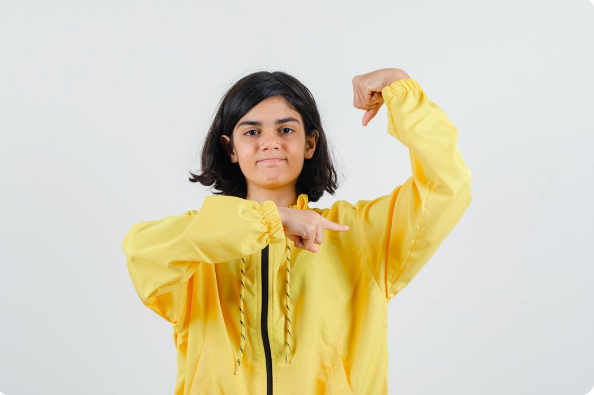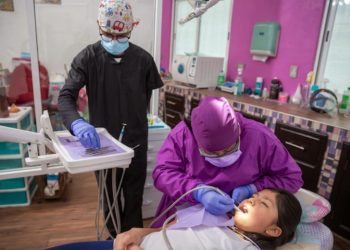Empowering the girl child in India is not just a matter of social justice; it is a critical driver for the nation’s economic and social progress. Recent studies reveal that while significant strides have been made in improving access to education and reducing gender disparities, millions of girls continue to face barriers that prevent them from reaching their full potential. This article explores how small, targeted actions—both at the community and policy levels—can create powerful ripples of change, ensuring brighter futures for millions of girls across India.
The Current Scenario of the Girl Child in India
India has witnessed remarkable improvements in girls’ education over recent decades. According to the latest UDISE+ data for 2023-24, approximately 82.9% of girls accessed secondary education, signaling progress toward gender parity. There has been a substantial increase in female enrollments; girls now comprise nearly 48.3% of school students with improved retention rates at secondary levels. Furthermore, infrastructure upgrades — including sanitation facilities, electricity, and girl-friendly school environments — have made schools safer and more welcoming.
However, challenges remain. Over 4.1 million girls dropped out of school between 2020 and 2022 due to factors such as early marriage, financial constraints, distance to schools, and safety concerns. Additionally, disparities persist in educational spending, with families often investing less in girls than boys. Despite these hurdles, programs like Beti Bachao Beti Padhao have significantly raised awareness and mobilized communities to support the rights of the girl child.
Small Steps with Big Impact
The journey to empower the girl child in India is defined by numerous small but significant steps that address systemic issues holistically:
- Community Engagement and Awareness
Changing mindsets is fundamental. Grassroots campaigns involving local leaders, families, and religious influencers play a vital role in challenging harmful norms like child marriage and gender bias. For instance, in Rajasthan’s Bhanhedi village, targeted dialogue and community involvement led to the village being declared child marriage-free, enabling multiple girls to complete their education. - Ensuring Access and Safety
Safe transportation, sanitary school facilities, and gender-sensitive learning spaces reduce dropout rates. Investments in building separate girl toilets and ensuring schools have functioning water and electricity are small infrastructure changes with outsized effects on attendance and retention. - Financial Support and Incentives
Scholarships, free textbooks, uniforms, and midday meal schemes remove economic barriers. Government initiatives and NGO programs provide these supports, making education affordable and accessible for marginalized families. - Quality Education and Skill Building
Beyond enrollment, quality education that includes life skills, digital literacy, and vocational training equips girls to envision promising futures. Support girl education initiatives focus on holistic learning that empowers girls with confidence, decision-making abilities, and career readiness.
The Role of Beti Bachao Beti Padhao
Launched in 2015, the Beti Bachao Beti Padhao (Save the Daughter, Educate the Daughter) initiative serves as a cornerstone for empowering the girl child in India. It targets declining child sex ratios and promotes girls’ education by fostering awareness and improving welfare services. The program’s multi-sectoral approach combines advocacy with concrete interventions such as improving school infrastructure, tracking enrollment, and enforcing laws against female foeticide and child marriage.
The campaign has had a tangible impact in several states, with increases in enrollment and improved gender ratios. According to recent surveys, more than 63% of communities credit Beti Bachao Beti Padhao with shifting attitudes toward girls’ education and wellbeing.
Supporting Girl Child Education: A Collective Responsibility
Government programs like the Right to Education Act and National Education Policy 2020 set strong frameworks. However, NGOs, private sector initiatives, and local communities remain indispensable collaborators in driving change. Large-scale campaigns such as CRY’s “Poori Padhai Desh Ki Bhalai” have mobilized support for complete girl child education, enrolling over 170,000 girls since 2024.
Families also play a central role. Educated mothers are likelier to educate their children, creating a virtuous intergenerational cycle of learning and empowerment. Promoting awareness among parents about the value of education for girls remains critical.
The Socio-Economic Payoff
Empowering the girl child through education yields broad socio-economic benefits:
- Girls’ education correlates with lower rates of early marriage and maternal mortality, healthier children, and reduced poverty.
- Each additional year of education raises girls’ future earnings potential significantly.
- Achieving gender parity in education could add approximately $770 billion to India’s GDP by 2025, according to McKinsey Global Institute.
- Educated girls become agents of change, promoting gender equality and inclusive development.
Conclusion
Empowering the girl child in India is a journey of many small, deliberate steps—community engagement, safe learning environments, financial support, skill-building, and transformative policies like Beti Bachao Beti Padhao. Together, these efforts create a powerful foundation for sustainable change.
When we support girl education with commitment and compassion, we not only uplift individual lives but also fuel India’s progress toward an equitable and prosperous future. In embracing these small yet significant actions, the nation taps into the transformative potential of its girls—the architects of tomorrow’s India.




